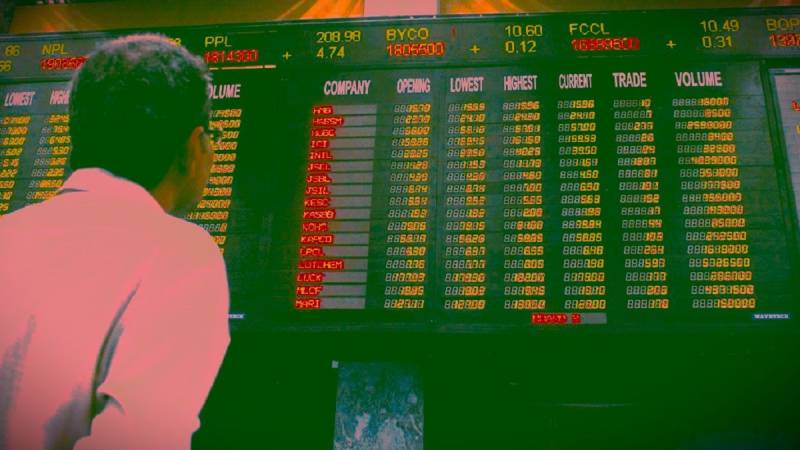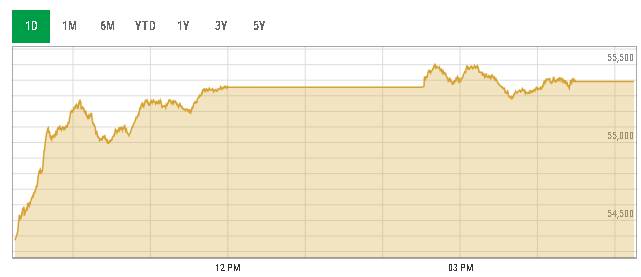
The positive momentum in the stock market on Friday saw it surge to an all-time high of over 55,000 points on the back of institutional buying and a growing expectation that the central bank may cut interest rates sooner rather than later on the back of easing inflation.
In the Pakistan Stock Exchange (PSX) on Friday, which resumed after a one-day break due to the Iqbal Day national holiday on Thursday, the bourse gained a whopping 1,129.94 points or around 2.08% as it jumped from its opening level of 54,261.42 points to 55,354.87 points before the Friday afternoon extended break.
When the bourse resumed, the positive momentum continued, rising to a high of 55,506.32 points, its highest-ever level, before settling at 55,391.36 by the close of the day.

The bourse was driven by the investment sector, banks, media and energy sectors, with Universal Insurance Company Limited (UVIC), Tri-Star Mutual Fund Limited (TSMF), 786 Investments Limited (786), Cnergyico PK Limited (CNERGY) and Samba Bank Limited (SBL) among the top advancers. CNERGY, Hum Network Limited (HUMNL), Pakistan Refinery Limited (PRL) and K-Electric (KEL) were among the most active stocks.
Overall, some 372.306 million shares exchanged hands.
Earlier, Mohammed Sohail, the founder and CEO of the brokerage firm Topline Securities Ltd, had pointed out that the high witnessed by the stock market in daily business was the result of high institutional buying, with investors expecting that the central bank will lower interest rates from its current high of 23% sooner than expected owing to a declining trend in global oil prices.
Moreover, he pointed out that while the KSE-100 index is at an all-time high, the KSE-30 index — which tracks the share prices of the top 30 companies, excluding dividends — is still hovering 35 per cent below its 2017 peak, suggesting that shares were still available at a relatively low price, which is leading to the current boom cycle.
Add to this recent data for inflation stable at 29.9% year on year for the past three weeks, down from 35.5% in the middle of October with the government's domestic debt profile remaining flat at Rs39.7 trillion in September 2023 and the external debt profile recording a decline of 7% month-on-month to Rs22.6 trillion, meaning its total debt stood at Rs62.3 trillion, down by 3% from August 2023, when it was at Rs63.97 trillion.
Meanwhile, the country saw an uptick in its remittance flow, up 11.63% month-on-month to $2.463 million. It was up by 9.58% compared to the same period last year when $2.25 million were sent home by overseas Pakistanis.
Rupee slips against the dollar
In the money market, however, the rupee continued to slip against the US dollar.
According to data issued by the State Bank of Pakistan (SBP), the rupee lost around 0.05% of its value, or around 13 paisas.
The rupee opened trading in the interbank at Rs286.90 from its last close on Wednesday afternoon. It fell to a low of Rs287.451 during trading before recovering to close the day at Rs287.03.
Interbank closing #ExchangeRate for todayhttps://t.co/toI3zBT2Yo#SBPExchangeRate pic.twitter.com/Dv1AMucM0k
— SBP (@StateBank_Pak) November 10, 2023
In the open market, the dollar continued to be traded for Rs287.50 at buy and as much as Rs290 at sell.

